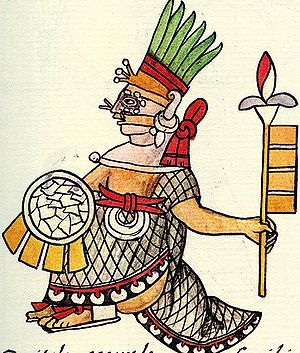| This article needs additional citations for verification. Please help improve this article by adding citations to reliable sources. Unsourced material may be challenged and removed. Find sources: "Painal" – news · newspapers · books · scholar · JSTOR (January 2021) (Learn how and when to remove this message) |

In Aztec religion, Painal (also spelled Paynal or Painalton, "Little Painal"; also spelled Paynalton; Classical Nahuatl: Payīnal [paˈjiːnaɬ], Payīnaltōn, Payīnaltzin) was sometimes interpreted by Spanish colonists as a god (teotl) who served as a representative of Huitzilopochtli. Other scholars have noted that Paynala may have been a toponym, confused for a person.
Bernardo de Sahagún's General History of the Things of New Spain, commonly called the Florentine Codex, briefly describes Painal thus:
Paynal was "the delegate," "the substitute," "the deputy," because he represented Uitzilopchtli. When there was a procession he was given the name Paynal, because they pressed him on quickly; he was made to hasten.
— Bernardino de Sahagún, Florentine Codex
References
- Roith, Christian (2018). "Representations of hands in the Florentine Codex by Bernardino de Sahagún (ca 1499–1590)". Paedagogica Historica. 54 (1–2): 114–133. doi:10.1080/00309230.2017.1360918. S2CID 148929704.
- ^ Miller, Mary E. (2005). "Rethinking Jaina: Goddesses, Skirts, and the Jolly Roger". Record of the Art Museum, Princeton University. 64: 67. JSTOR 3774835.
This article relating to a myth or legend from Mesoamerica is a stub. You can help Misplaced Pages by expanding it. |